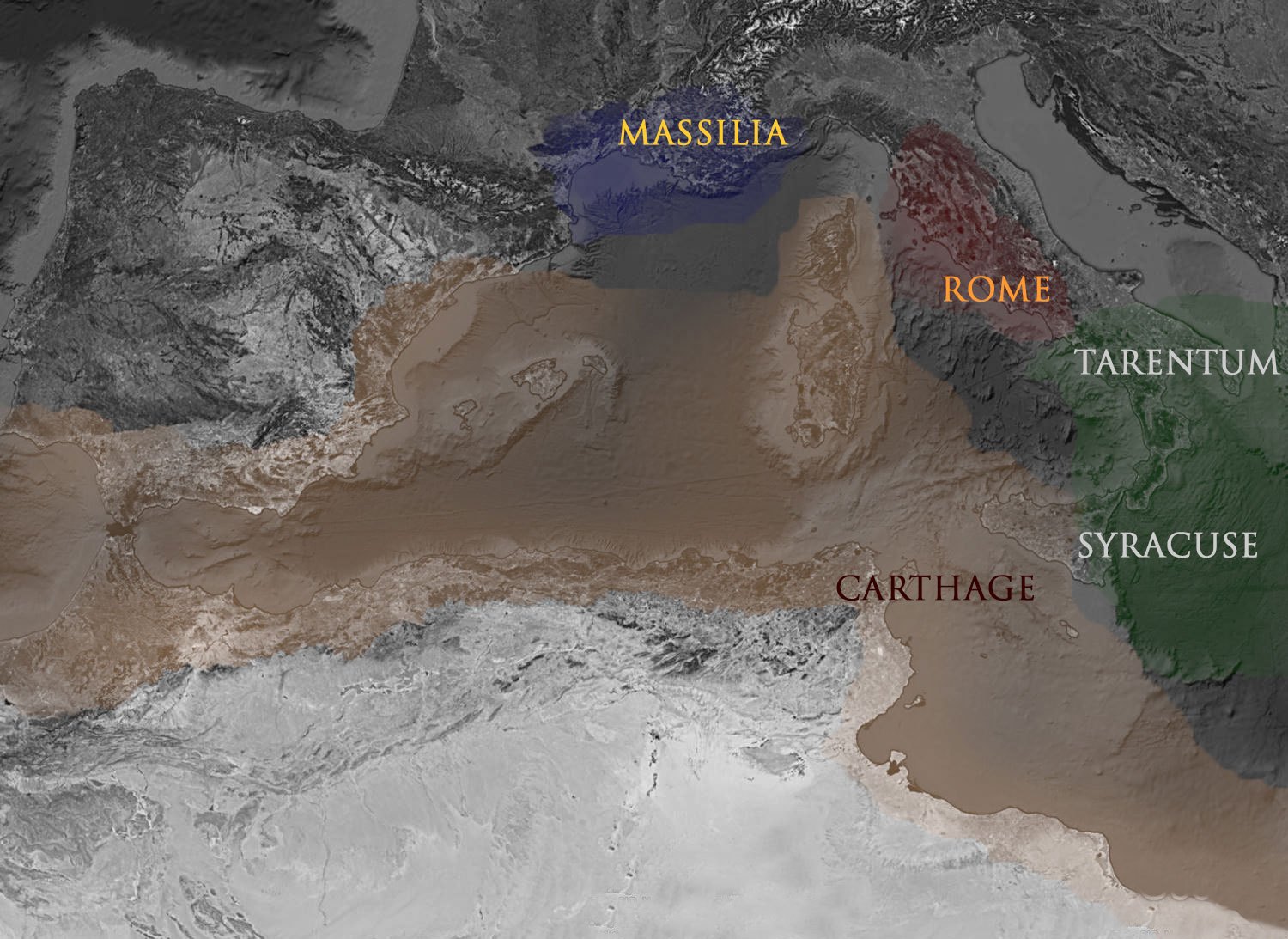348 BC
Treaty between Carthage and Rome
Exclusive Trading Zones and Spheres of Influence.
There were two treaties signed between Carthage and Rome before the war with Pyrrhus (280 BC). The first was signed in 509 BC, the first year of the Roman Republic. The second was signed in 348 BC.
Essentially, the treaty demarcated the areas where Roman and Carthaginian trading vessels could sail. In the first treaty, the Roman state was weak, weaker than the Etruscan confederation to the north and the Greek city states to the south, and Roman sailing and trading was restricted to western Italian coastal waters. The Carthaginians, on the other hand, had the run of the western Mediterranean including the islands of Corsica, Sardinia and most of Sicily. Given that the Roman state was struggling for survival against Tarquinian revanchism (Tarquinius Superbus supported by the Etruscan king Lars Porsena of Clusium), the Etruscan city of Veii, the Latins and Italic hill tribes, she had little maritime capability or interest. If fact, there was no conflict of interest between Carthage and Rome.
The second treaty (348 BC) between Carthage and Rome took place 161 years after the first. Rome is now an intermediate power, Etruria is greatly diminished, Rome dominates the Latin communities, and she has allied herself with the cities of Campania that are being threatened by the Samnites. Nevertheless, the second treaty has many provisions found in the first.
Some key provisions of the treaty of 348 BC (Proto-mercantilism?)
- Carthaginian merchants may trade in Rome and Romans may trade in Carthage
- Roman merchants may not trade with or establish colonies in the Western Mediterranean or in Africa
- Roman warships may not sail south of the Fair Promontory (which lies on the African coast to the north of Carthage)
- If Roman trading vessels should land at prohibited ports because of duress, they may only take enough provisions to refit the ship and must leave within 5 days
- When Roman merchants do trade with approved Carthaginian cities, transactions must take place in the presence of a Herald or town clerk; in Carthaginian Sicily they will have full rights to trade and to protection by Carthaginian authorities
- Carthaginians may not build any forts in Latium
- If Carthaginians enter Latin territory under arms, they may not stay the night
- If the Carthaginians should take a Latin city not in alliance with Rome, they may keep the prisoners and goods but must turn the city over to the Romans undamaged
- If captives are taken from a city in alliance with Rome and if the Carthaginians should land in Roman or Roman allied territory, any Roman may set that captive free
- The same is true in reverse should a Roman ship land along with captives in Carthaginian territory
Strategic considerations
- This treaty mostly favors Carthage
- The Romans are heavily engaged with the land forces of the surrounding peoples and have minimal maritime interests at this time
- Carthage and Rome have their spheres of influence clearly delineated
- The Romans will not meddle in Africa, Sardinia, Spain or Carthaginian Sicily
- The Romans are discouraged from exploring or having intercourse with Libya, Spain, or Sardinia
- The Carthaginians will not meddle in Latium
Mommsen, Theodor. The History of Rome (Annotated) (Kindle Locations 7363-7367). Kindle Edition.

